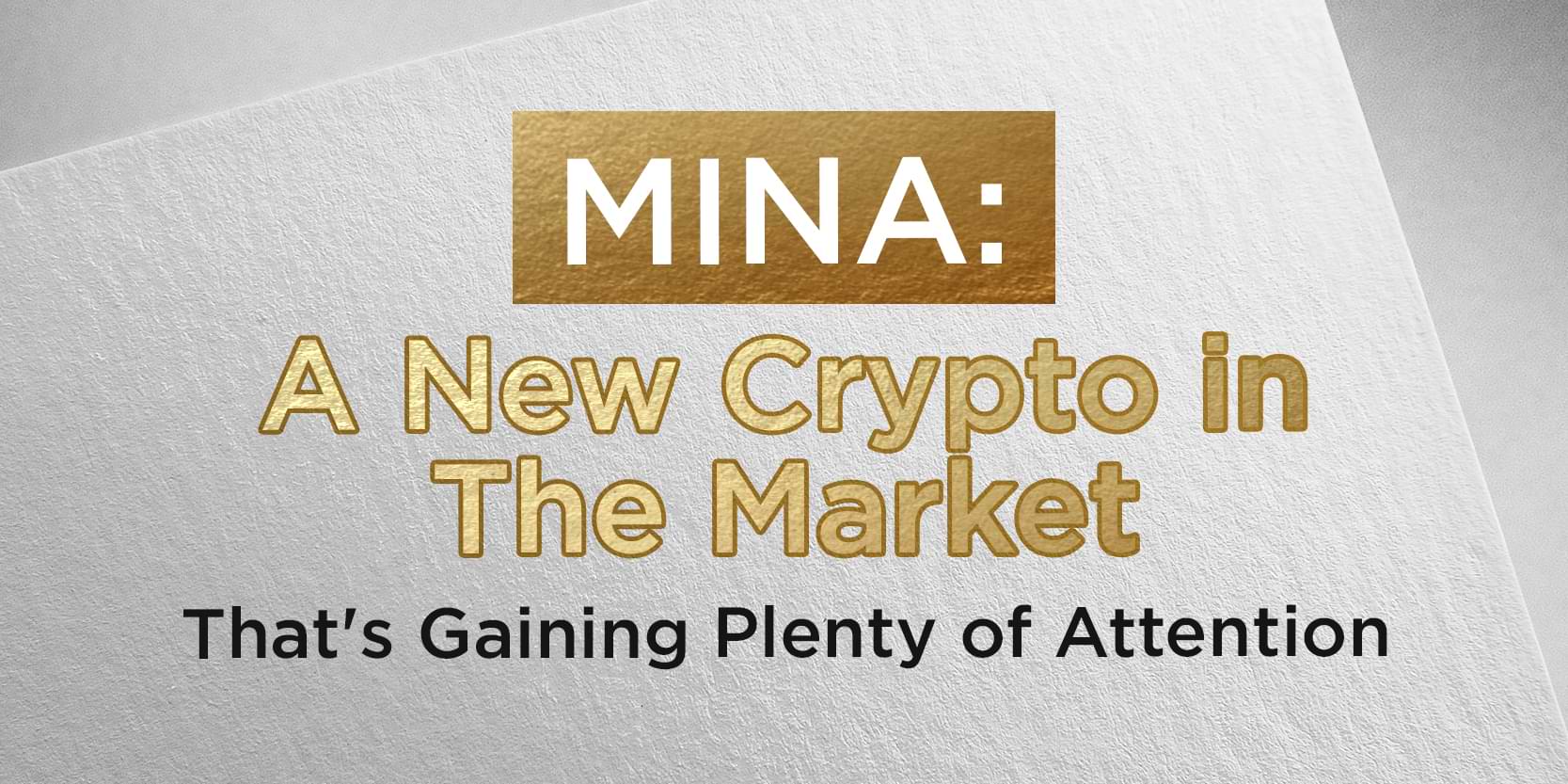
MINA: A New Crypto in The Market That's Gaining Plenty of Attention
The cryptocurrency bug turned the investment-desolate 2020 into a gold mine for early adopters, bringing forth a new era of millionaires who hold real estate, millions of dollars, and luxury goods—but in the form of digital assets. The metaverse has never been swept by a craze as expensive as this year's bull market, turning the word "investment" into an all-digital experience that even your next-door neighbour has likely gotten into.
Among the brightest stars in the crypto universe, from Bitcoin crypto to Ethereum currency , are smaller-scale altcoins that skyrocketed in value at the start of the year. Dogecoin currency and Terra (LUNA) are particularly notorious for boasting over-25,000% gains over the past year, beating industry frontrunners in terms of year-over-year growth. Their astronomical performance opened doors for altcoins, which had mostly trailed in the shadows of Ethereum—now at the centre of investors' attention.
The Mina Protocol (MINA) is the newest altcoin to enter the market, joining popular exchanges like Kraken and OKEx on June 1, already scoring a market cap of over $400 million and an all-time high of $9.02. More importantly, it has introduced an all-new blockchain protocol that's been gaining attention for its impressive features. This article will discuss what makes Mina such an amazing project and how it fairs in the cryptocurrency market.
What is MINA?
The Mina Protocol (MINA) is an open-source, public blockchain protocol with roots that date back to 2017. Its biggest value proposition is the idea of a "compressed" blockchain that reduces the entire chain's size—regardless of how many new blocks are added—to a fixed value of 22 KB. In contrast, most blockchains average at 300 GB—a number that's continuously growing as more blocks are added onto the network. This innovative feature has been giving MINA significant traction despite only launching on exchanges at the start of the month.
A Focus on Efficiency
One of the Mina Protocol's most important features is that validators who join the network to participate in staking don't need to go through the blockchain's entire transaction history. Traditionally, blockchains like Ethereum and Bitcoin—whether Proof-of-Work or Proof-of-Stake—require all new miners or stakers to validate the entire transaction history before working on new transactions.
This is an extremely lengthy and resource-intensive process that causes the blockchain size to bloat—a process that the Mina Protocol effectively removes through zk-SNARKS or "zero knowledge of proofs." It enables nodes to store only a single micro-certificate as opposed to storing all transaction history, allowing them access to verify any new transactions without having to go through the hassle of downloading gigabytes worth of data just for verification purposes.
The zk-SNARKS, in turn, not only significantly reduces storage footprints on individual machines but also drastically improves performance, making it possible for every node to process more transactions per second than current blockchain protocols can take care of. It essentially allows each validator to act as a full node on the network.
Reimagining Decentralised Applications
The Mina Protocol aims to reimagine decentralised applications, challenging Ethereum's highly-congested network with a completely new category of dApps called Snapps. These are powered by SNARKS and are applications that act as standalone blockchains able to interoperate with other projects for cross-chain transactions and data sharing. The goal is to allow developers the ability to build high-performance apps without having to worry about scalability issues or network congestion. It's also a highly privacy-focused system that allows data to be verified without disclosing its actual content.
Introducing the Proof-of-Load
The Mina Protocol has introduced something new to the crypto industry: an alternative consensus mechanism called Proof-of-Load (PoL). Using PoL, miners compete in bidding wars for computing power and bandwidth as opposed to competing with hashing power. This means they don't need expensive hardware or huge processing capacity like Bitcoin needs but can still be rewarded fairly for their contribution to securing the network.
MINA will cost $0.02 per transaction while Ethereum charges about 50 cents per transaction today (a value that constantly inflates due to network congestion); this allows developers access to cheaper transactions than other platforms offer without compromising performance.
How Much is MINA Worth?
MINA currency, the native cryptocurrency of the Mina Protocol, experienced an explosive warm welcome on the first of the month, closing sales of up to $9.02 per coin. The liquidity quickly stabilised prices, bringing the MINA coin down to a less volatile $2.6-$3.6. Despite being new, it has racked up a live market cap of over $400 million—just five days after its public release.
The Mina Protocol has amassed considerable popularity due to its unique features—it's the first and only compressed blockchain, so all eyes are currently focused on MINA's movements. It's still early to make accurate crypto predictions, but there's no doubt that the coin has taken the cryptocurrency industry by storm—and opportunity-seekers are seeing it as the possible "next big thing." Based on the current attention over MINA, some analysts believe that it can grow to $15-40 by the end of the year, but that would highly depend on how the coin performs over the next few critical months.
The Risks of Investing in MINA
There are a few risks worth considering before investing in the coin. The first is that MINA's parent company has only been around for three years and doesn't have an established track record of success like other coins do. Second, as MINA isn't a stable or anchored coin, it's subject to the volatility of the cryptocurrency market. Naturally, price swings are expected, especially as the market is currently floating on unsteady grounds, with government regulations after another and the recent sell-off that wiped billions off the crypto sphere.
Most investors have gotten used to it by now—but if you're new to the world of coins, then it may be overwhelming to see a once-promising investment go into the negatives within a few days (which is why others have taken to assets with a more stable crypto future).
Like all investments, pouring finances into cryptocurrency—a highly speculative asset class—is a risky affair. While MINA is the hot new coin to get into right now, it might not be for you, so consider your cards before playing into this blockchain sensation.





Leave a Reply
26 comments
Add comment ×